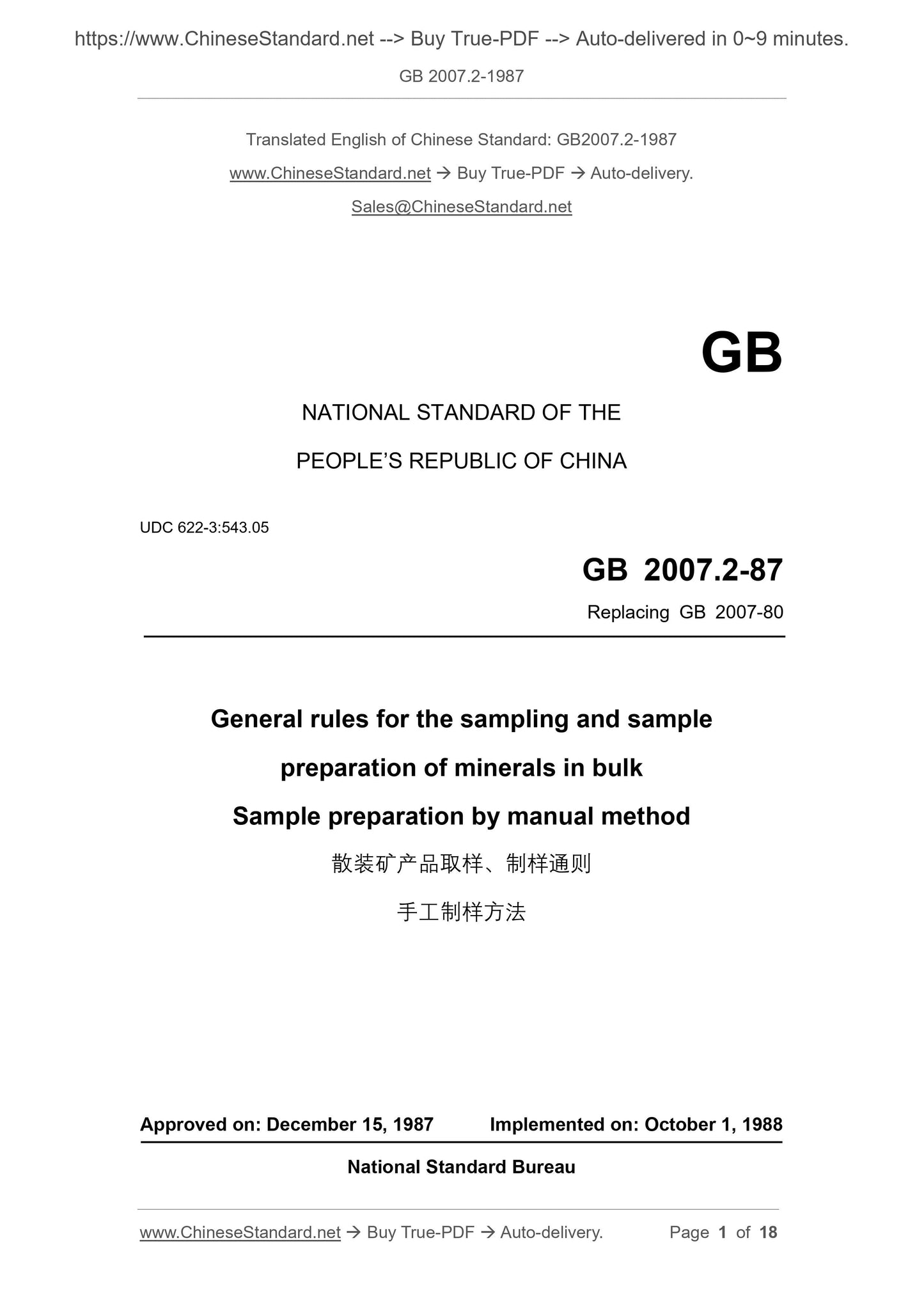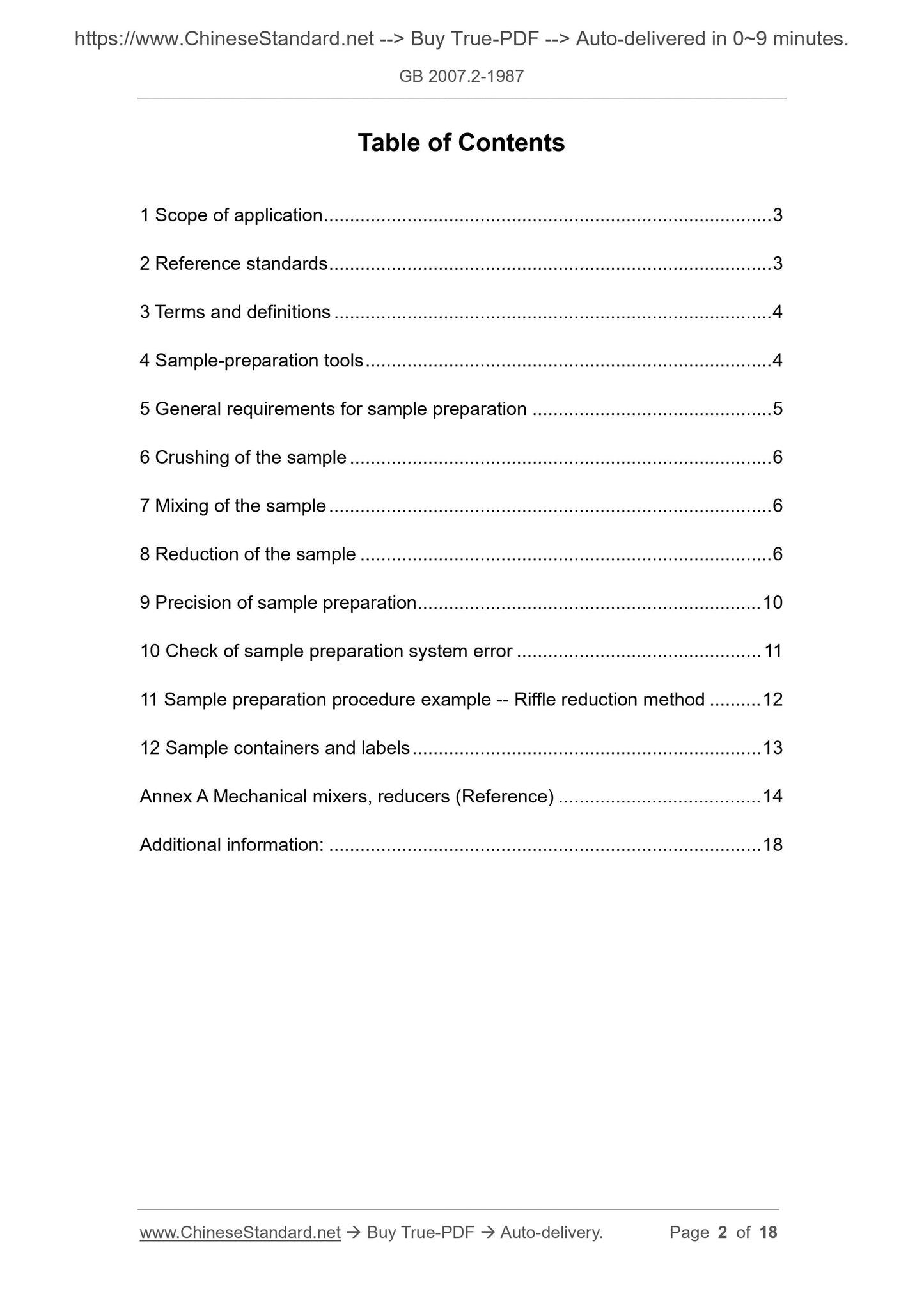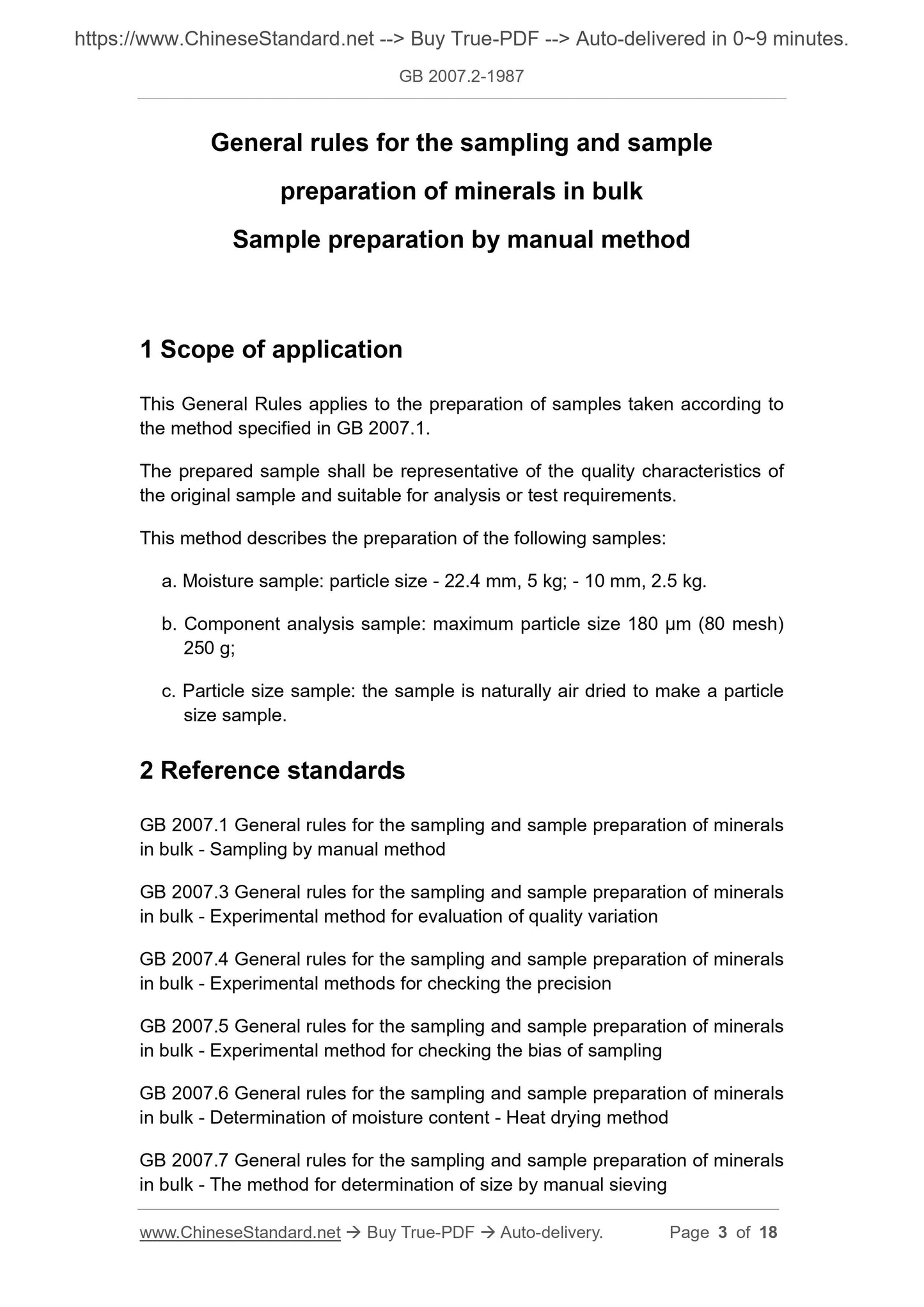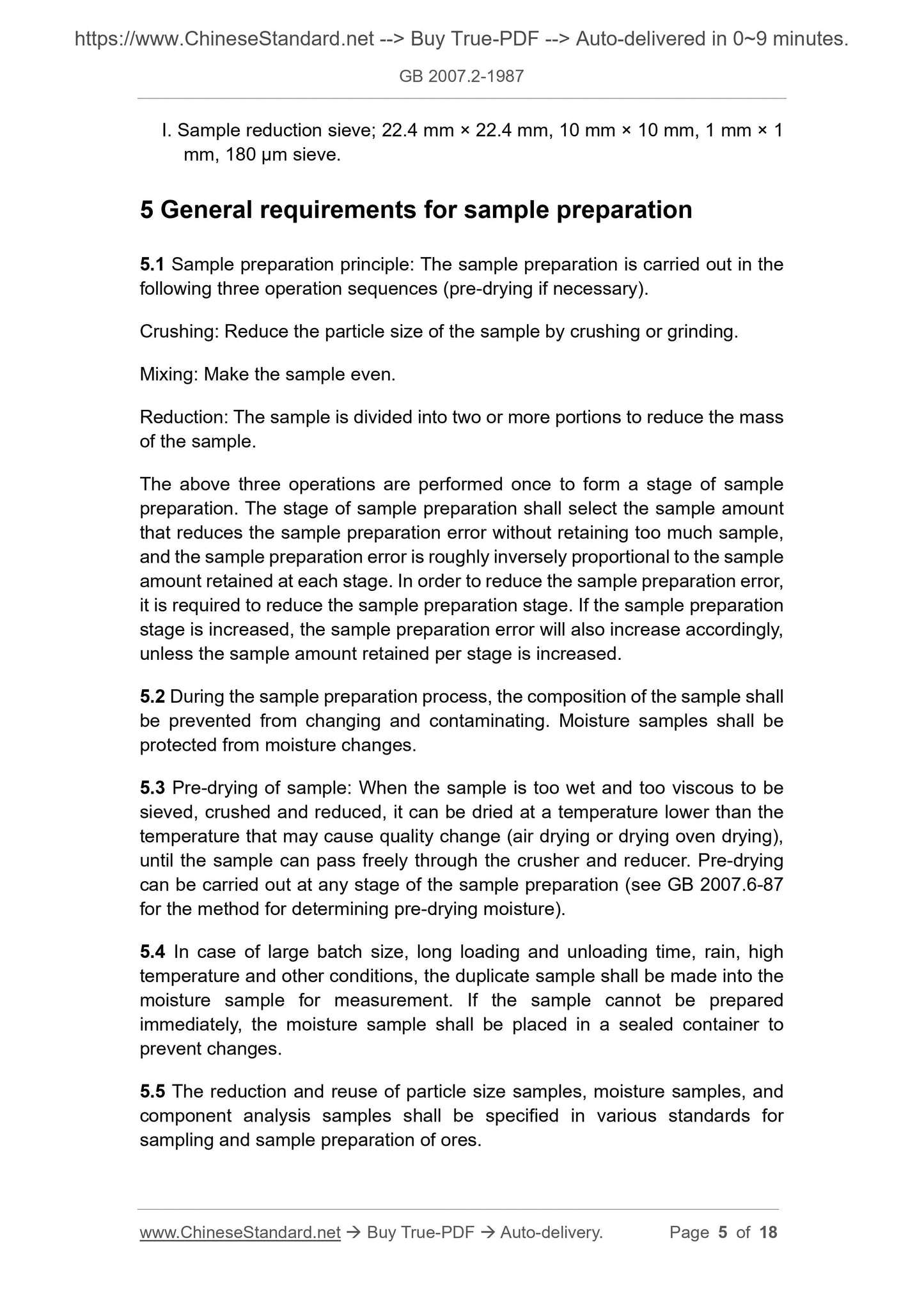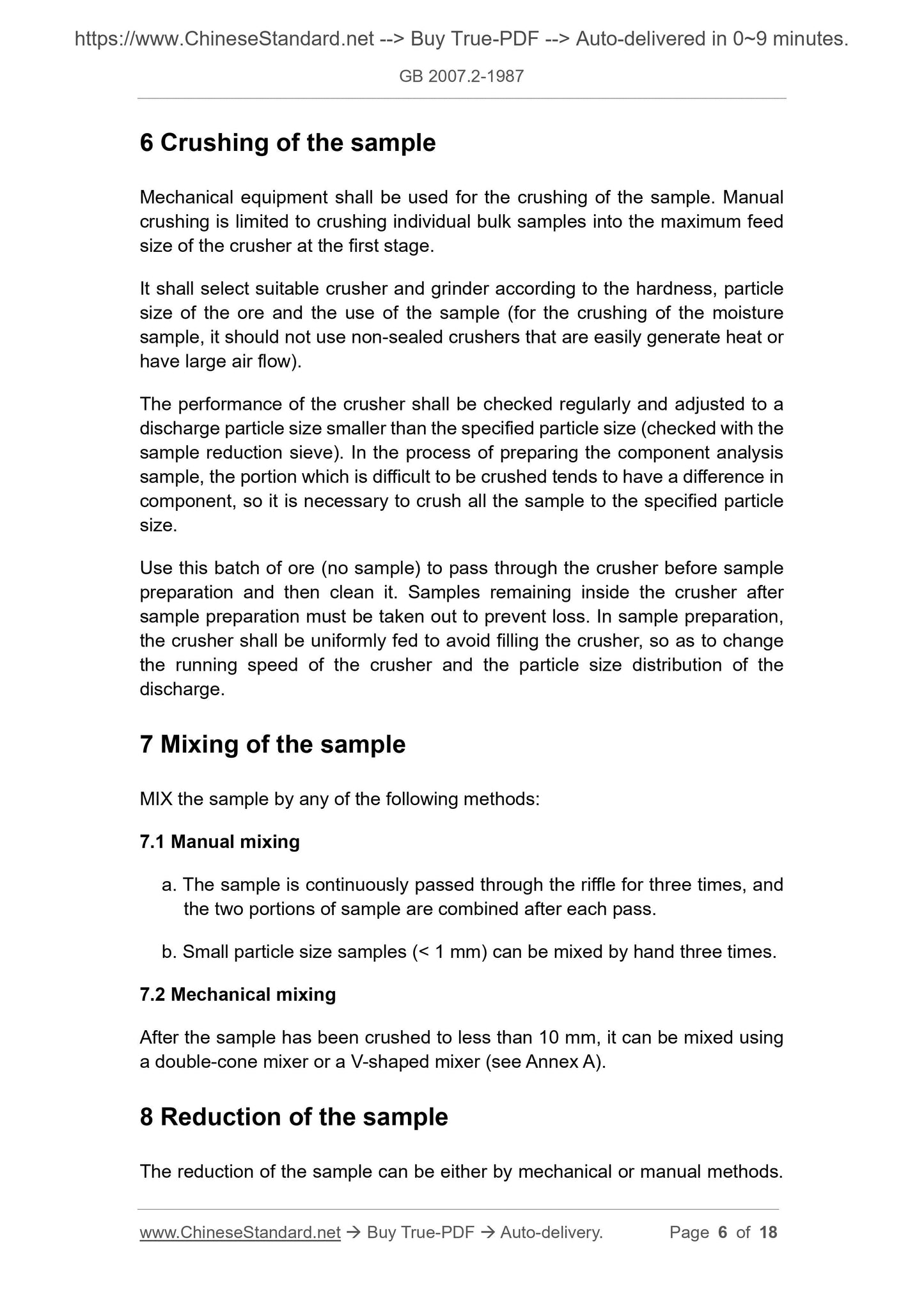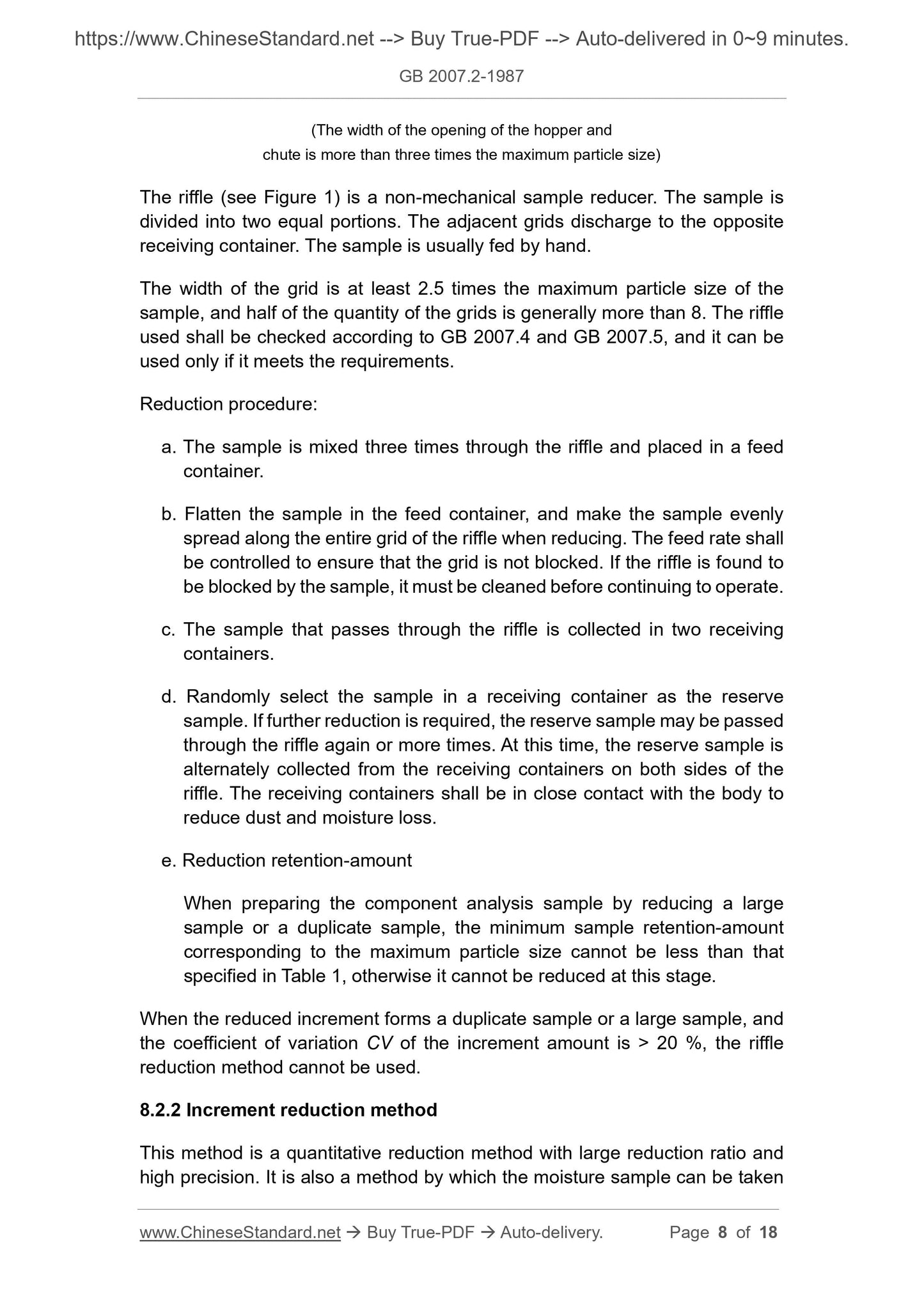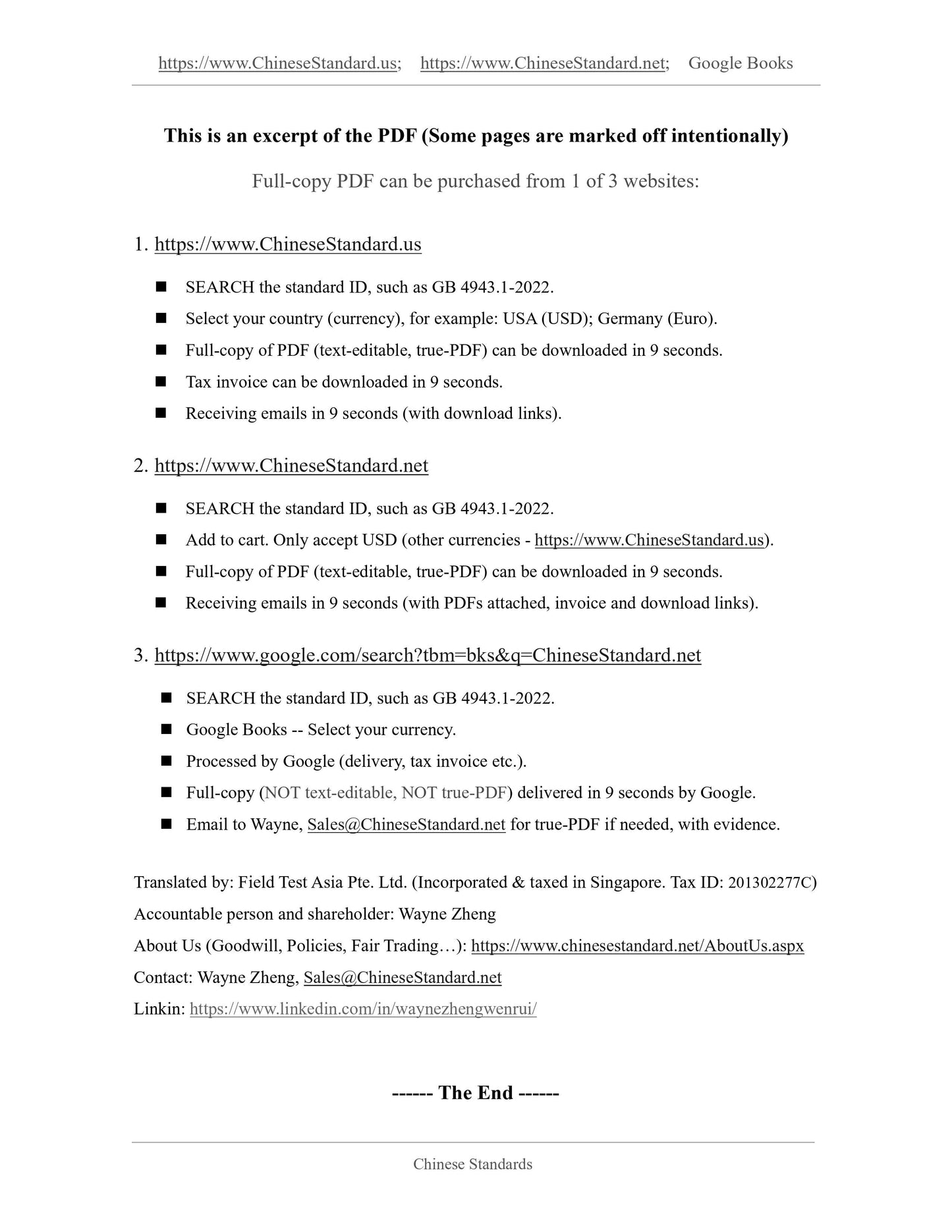1
/
of
7
www.ChineseStandard.us -- Field Test Asia Pte. Ltd.
GB/T 2007.2-1987 English PDF (GB/T2007.2-1987)
GB/T 2007.2-1987 English PDF (GB/T2007.2-1987)
Regular price
$70.00
Regular price
Sale price
$70.00
Unit price
/
per
Shipping calculated at checkout.
Couldn't load pickup availability
GB/T 2007.2-1987: [GB 2007.2-1987] General rules for the sampling and sample preparation of minerals in bulk. Sample preparation by manual method
Delivery: 9 seconds. Download (and Email) true-PDF + Invoice.Get Quotation: Click GB/T 2007.2-1987 (Self-service in 1-minute)
Newer / historical versions: GB/T 2007.2-1987
Preview True-PDF
Scope
This General Rules applies to the preparation of samples taken according tothe method specified in GB 2007.1.
The prepared sample shall be representative of the quality characteristics of
the original sample and suitable for analysis or test requirements.
This method describes the preparation of the following samples:
a. Moisture sample: particle size - 22.4 mm, 5 kg; - 10 mm, 2.5 kg.
b. Component analysis sample: maximum particle size 180 μm (80 mesh)
250 g;
c. Particle size sample: the sample is naturally air dried to make a particle
size sample.
Basic Data
| Standard ID | GB/T 2007.2-1987 (GB/T2007.2-1987) |
| Description (Translated English) | [GB 2007.2-1987] General rules for the sampling and sample preparation of minerals in bulk. Sample preparation by manual method |
| Sector / Industry | National Standard (Recommended) |
| Classification of Chinese Standard | D04 |
| Classification of International Standard | 73.01 |
| Word Count Estimation | 10,159 |
| Date of Issue | 12/19/1987 |
| Date of Implementation | 10/1/1988 |
| Older Standard (superseded by this standard) | GB 2007-1980 |
| Quoted Standard | GB 2007.1; GB 2007.3; GB 2007.4; GB 2007.5; GB 2007.6; GB 2007.7, |
| Issuing agency(ies) | National Bureau of Standards |
| Summary | This standard applies to the preparation method according to GB 2007. 1 provisions in the samples taken. Sample preparation should be representative of the original sample quality characteristics, and is suitable for analysis or test requirements. |
Share
